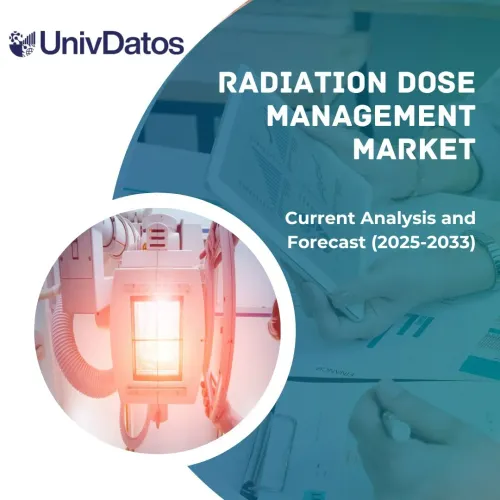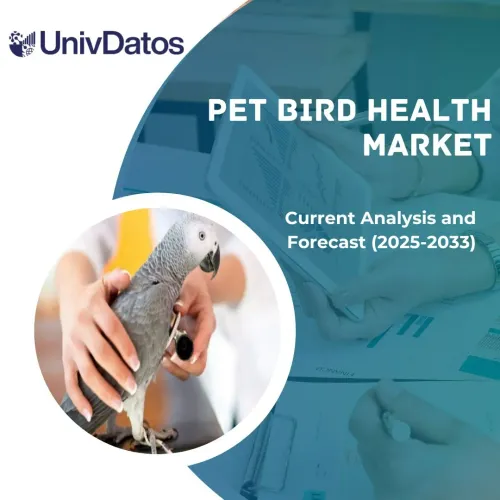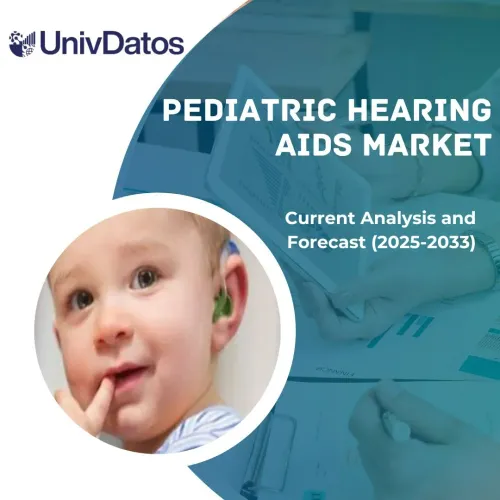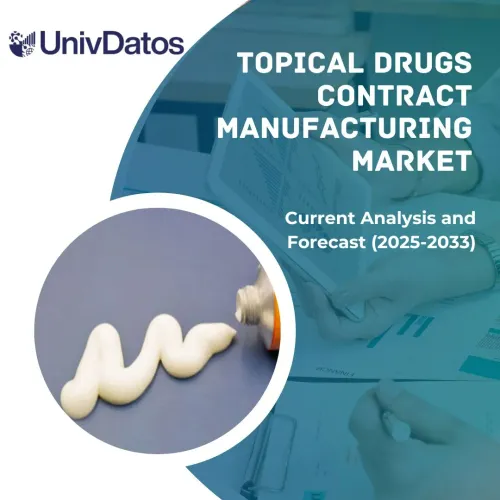- Home
- Chi siamo
- Settore
- Servizi
- Lettura
- Contattaci
Mercato dei trattamenti per l'ansia e la depressione: analisi e previsioni attuali (2021-2027)
Enfasi sul tipo di farmaco (antidepressivi, anticonvulsivanti, antipsicotici atipici, benzodiazepine e beta-bloccanti); canali di distribuzione (farmacie ospedaliere, farmacie al dettaglio e canali online); tipo di disturbo (disturbo depressivo maggiore (MDD), DOC, fobia, disturbo post-traumatico da stress (PTSD) e altri); regione/paese
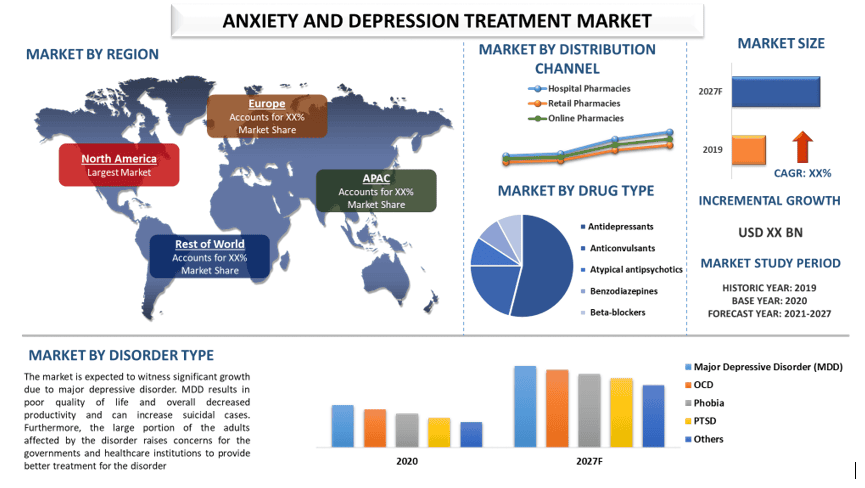
RICHIEDI UN CAMPIONE PDF GRATUITO
Si prevede che il mercato globale dei trattamenti per l'ansia e la depressione cresca con un CAGR elevato di circa il 3% durante il periodo di previsione (2021-2027).L'ansia e la depressione sono i disturbi mentali più comuni in cui l'umore malinconico persiste a lungo. Pertanto, influisce sull'efficienza generale della persona e la depressione è direttamente collegata allo stress e all'ansia. L'ansia a lungo termine è considerata uno dei sintomi della depressione.
Lo sviluppo rapido di nuovi farmaci e la crescente consapevolezza della gravità dei disturbi mentali tra le persone contribuiscono alla significativa crescita del mercato dei trattamenti per l'ansia e la depressione. Le mutevoli preferenze dello stile di vita, come il consumo di sostanze e problemi come l'insonnia, sono i principali fattori che contribuiscono all'aumento dei casi di depressione. Inoltre, la crescente disoccupazione in tutto il mondo è anche responsabile dell'aumento dei livelli di stress e ansia tra i giovani, con conseguente aumento della domanda di un migliore trattamento dell'ansia e della depressione.Secondo l'Organizzazione internazionale del lavoro, il tasso di disoccupazione globale aumenta del 6,7% annuo.
GlaxoSmithKline plc, Pfizer, Inc., Eli Lilly and Company, H. Lundbeck A/S, Forest Laboratories, Inc., AstraZeneca, Merck & Company, Inc., Johnson & Johnson e Sanofi-Aventis sono alcuni dei principali attori che operano nel mercato. Diverse fusioni e acquisizioni insieme a partnership sono state intraprese da questi attori per facilitare i clienti con nuove varietà di trattamenti per l'ansia e la depressione.
Approfondimenti presentati nel rapporto
“Tra i tipi di farmaci, il segmento dei farmaci antidepressivi detiene la quota maggiore”
In base ai tipi di farmaci, il mercato dei trattamenti per l'ansia e la depressione è segmentato in antidepressivi, anticonvulsivanti, antipsicotici atipici, benzodiazepine e beta-bloccanti. Si prevede che la classe dei farmaci antidepressivi avrà una crescita significativa durante il periodo di previsione grazie allo sviluppo continuo e all'approvazione di nuovi farmaci per il trattamento dell'ansia e della depressione.Ad esempio, nell'aprile 2022, Lupin Ltd ha ricevuto l'approvazione dall'ente sanitario statunitense per commercializzare la sua versione generica di compresse a rilascio prolungato di desvenlafaxina utilizzate per il trattamento della depressione.
RICHIESTA DI PERSONALIZZAZIONE
“Tra i canali di distribuzione, il segmento dei canali online detiene la quota maggiore”
In base al canale di distribuzione, il mercato è segmentato in farmacie ospedaliere, farmacie al dettaglio e canali online. Tra questi, si prevede che il canale di distribuzione delle farmacie online assisterà a una crescita significativa a causa dei crescenti investimenti nell'e-farmacia in tutto il mondo. Tuttavia, i farmaci per l'ansia e la depressione sono per lo più disponibili solo su prescrizione. Pertanto, i medici ora preferiscono le e-prescrizioni per consentire ai pazienti di accedere facilmente ai farmaci con l'aiuto delle e-prescrizioni. Paesi come il Regno Unito stanno dedicando maggiori sforzi all'implementazione delle e-prescrizioni. Per esempio,il servizio di prescrizione elettronica (EPS) sarà implementato in tutta l'Inghilterra dopo una prova in 60 studi medici e centinaia di farmacie, nel 2019. Il National Health Service (NHS) mirava a risparmiare 373 milioni di dollari nei prossimi due anni.
“Tra i tipi di disturbo, il segmento del disturbo depressivo maggiore detiene la quota maggiore”
In base al tipo di disturbo, il mercato è segmentato in disturbo depressivo maggiore (MDD), DOC, fobia, PTSD e altri. Tra questi, si prevede che il mercato del disturbo depressivo maggiore assisterà a una crescita significativa. La crescita del segmento è principalmente attribuita all'aumento del livello di stress sul posto di lavoro e al numero di persone che soffrono, insieme alla mancanza di un'adeguata conoscenza della gravità delle malattie, che porta allo sviluppo dello stress in un disturbo depressivo maggiore.Secondo i rapporti del posto di lavoro americano e del NIOSH, l'80% dei lavoratori si sente stressato sul lavoro, tra questi il 40% dei lavoratori ha riferito che il proprio lavoro era molto o estremamente stressante.
“Il Nord America rappresenta uno dei maggiori mercati per il mercato dei trattamenti per l'ansia e la depressione”
Per una migliore comprensione delle dinamiche di mercato del mercato dei trattamenti per l'ansia e la depressione, è stata condotta un'analisi dettagliata per diverse regioni in tutto il mondo, tra cui Nord America (Stati Uniti, Canada e il resto del Nord America), Europa (Germania, Francia, Spagna, Regno Unito, Italia e il resto d'Europa), Asia-Pacifico (Cina, India, Australia, Giappone e il resto dell'APAC), il resto del mondo è stato condotto. Nel 2020, il Nord America ha rappresentato la quota di maggioranza nel mercato. L'aumento dei programmi di sensibilizzazione da parte dei governi sta trainando il mercato dei disturbi d'ansia e depressione nella regione.Il Canada, ad esempio, ha lanciato la settimana della consapevolezza delle malattie mentali nell'ottobre 2021 per educare le persone sulla salute mentale e sui suoi effetti.
Motivi per acquistare questo rapporto:
- Lo studio include la misurazione del mercato e l'analisi delle previsioni convalidate da esperti chiave del settore autenticati
- Il rapporto presenta una rapida panoramica delle prestazioni complessive del settore a colpo d'occhio
- Il rapporto copre un'analisi approfondita dei principali attori del settore con particolare attenzione ai principali dati finanziari aziendali, al portafoglio prodotti, alle strategie di espansione e agli sviluppi recenti
- Esame dettagliato di fattori trainanti, vincoli, tendenze chiave e opportunità prevalenti nel settore
- Lo studio copre in modo completo il mercato in diversi segmenti
- Analisi approfondita a livello regionale del settore
Opzioni di personalizzazione:
Il mercato globale dei trattamenti per l'ansia e la depressione può essere ulteriormente personalizzato in base alle esigenze o a qualsiasi altro segmento di mercato. Oltre a ciò, UMI capisce che potresti avere le tue esigenze aziendali, quindi sentiti libero di metterti in contatto con noi per ottenere un rapporto che soddisfi completamente le tue esigenze.
Indice
L'analisi del mercato storico, la stima del mercato attuale e la previsione del mercato futuro del mercato globale dei trattamenti per l'ansia e la depressione sono stati i tre passaggi principali intrapresi per creare e analizzare l'adozione dei trattamenti per l'ansia e la depressione nelle principali regioni a livello globale. È stata condotta un'ampia ricerca secondaria per raccogliere i numeri storici del mercato e stimare le dimensioni del mercato attuale. In secondo luogo, per convalidare questi approfondimenti, sono state prese in considerazione numerose scoperte e ipotesi. Inoltre, sono state condotte anche ampie interviste primarie, con esperti del settore lungo tutta la catena del valore del mercato globale dei trattamenti per l'ansia e la depressione. Dopo l'assunzione e la convalida dei numeri di mercato attraverso interviste primarie, abbiamo impiegato un approccio top-down/bottom-up per prevedere le dimensioni complete del mercato. Successivamente, sono stati adottati metodi di scomposizione del mercato e di triangolazione dei dati per stimare e analizzare le dimensioni del mercato dei segmenti e dei sottosegmenti a cui appartiene il settore. La metodologia dettagliata è spiegata di seguito:
Cerca maggiori dettagli sulla metodologia di ricerca
Analisi delle dimensioni storiche del mercato
Fase 1: Studio approfondito delle fonti secondarie:
È stato condotto uno studio secondario dettagliato per ottenere le dimensioni storiche del mercato dei trattamenti per l'ansia e la depressione attraverso fonti interne dell'azienda comerapporti annuali e bilanci, presentazioni sulle performance, comunicati stampa, ecc.e fonti esterne tra cuiriviste, notizie e articoli, pubblicazioni governative, pubblicazioni dei concorrenti, rapporti di settore, database di terze parti e altre pubblicazioni credibili.
Fase 2: Segmentazione del mercato:
Dopo aver ottenuto le dimensioni storiche del mercato dei trattamenti per l'ansia e la depressione, abbiamo condotto un'analisi secondaria dettagliata per raccogliere approfondimenti storici sul mercato e condividere diversi segmenti e sottosegmenti per le principali regioni. I principali segmenti inclusi nel rapporto come tipo di farmaco, tipo di disturbo e canale di distribuzione. Sono state condotte ulteriori analisi a livello nazionale per valutare l'adozione complessiva dei trattamenti per l'ansia e la depressione in tutto il mondo.
Fase 3: Analisi dei fattori:
Dopo aver acquisito le dimensioni storiche del mercato di diversi segmenti e sottosegmenti, abbiamo condotto un'analisi dettagliataanalisi fattorialeper stimare le dimensioni attuali del mercato dei trattamenti per l'ansia e la depressione. Inoltre, abbiamo condotto un'analisi fattoriale utilizzando variabili dipendenti e indipendenti come il numero crescente di persone con malattie croniche e l'aumento della popolazione anziana in tutto il mondo. È stata condotta un'analisi approfondita degli scenari di domanda e offerta considerando le principali partnership, fusioni e acquisizioni, l'espansione del business e i lanci di prodotti nel settore dei trattamenti per l'ansia e la depressione in tutto il mondo.
RICHIESTA DI PERSONALIZZAZIONE
Stima e Previsione dell'Attuale Dimensione del Mercato
Dimensionamento del Mercato Attuale:Sulla base di approfondimenti attuabili derivanti dai precedenti 3 passaggi, siamo giunti all'attuale dimensione del mercato, ai principali attori nel mercato dei trattamenti per l'ansia e la depressione e alle quote di mercato dei segmenti. Tutte le quote percentuali richieste, le suddivisioni e le ripartizioni del mercato sono state determinate utilizzando l'approccio secondario sopra menzionato e sono state verificate attraverso interviste primarie.
Stima e Previsione:Per la stima e la previsione del mercato, sono stati assegnati pesi a diversi fattori, tra cui driver e tendenze, vincoli e opportunità disponibili per gli stakeholder. Dopo aver analizzato questi fattori, sono state applicate tecniche di previsione pertinenti, ovvero approccio top-down/bottom-up, per arrivare alle previsioni di mercato per il 2027 per diversi segmenti e sottosegmenti nei principali mercati a livello globale. La metodologia di ricerca adottata per stimare la dimensione del mercato comprende:
- La dimensione del mercato del settore, in termini di valore (US$) e il tasso di adozione del Trattamento per l'Ansia e la Depressione nei principali mercati a livello nazionale
- Tutte le quote percentuali, le suddivisioni e le ripartizioni dei segmenti e dei sottosegmenti di mercato
- Principali attori nel mercato del Trattamento per l'Ansia e la Depressione in termini di prodotti offerti. Inoltre, le strategie di crescita adottate da questi attori per competere nel mercato in rapida crescita
Validazione della Dimensione e della Quota di Mercato
Ricerca Primaria:Sono state condotte interviste approfondite con i Key Opinion Leader (KOL), tra cui Dirigenti di Alto Livello (CXO/VP, Responsabile Vendite, Responsabile Marketing, Responsabile Operativo e Responsabile Regionale, Responsabile Nazionale, ecc.) nelle principali regioni. I risultati della ricerca primaria sono stati quindi riassunti e sono state eseguite analisi statistiche per dimostrare l'ipotesi dichiarata. Gli input dalla ricerca primaria sono stati consolidati con i risultati secondari, trasformando così le informazioni in approfondimenti attuabili.
Suddivisione dei Partecipanti Primari in Diverse Regioni
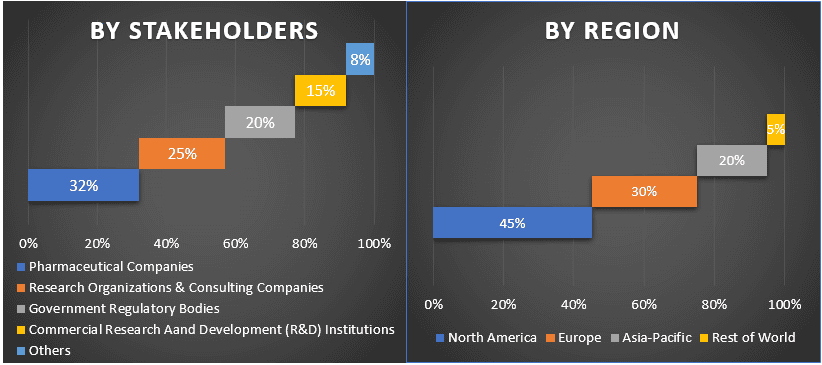
Ingegneria di Mercato
La tecnica di triangolazione dei dati è stata impiegata per completare la stima complessiva del mercato e per arrivare a numeri statistici precisi di ogni segmento e sottosegmento del mercato dei trattamenti per l'ansia e la depressione. I dati sono stati suddivisi in diversi segmenti e sottosegmenti dopo aver studiato vari parametri e tendenze nelle aree del tipo di farmaco, del tipo di disturbo e del canale di distribuzione del mercato dei trattamenti per l'ansia e la depressione.
L'obiettivo principale dello Studio di Mercato sui Trattamenti per l'Ansia e la Depressione
Le attuali e future tendenze del mercato dei trattamenti per l'ansia e la depressione sono state individuate nello studio. Gli investitori possono ottenere approfondimenti strategici per basare la loro discrezionalità per gli investimenti sull'analisi qualitativa e quantitativa eseguita nello studio. Le attuali e future tendenze del mercato hanno determinato l'attrattiva complessiva del mercato a livello regionale, fornendo una piattaforma per il partecipante industriale per sfruttare il mercato inesplorato per trarne vantaggio come first-mover. Altri obiettivi quantitativi degli studi includono:
- Analizzare le dimensioni attuali e previste del mercato dei trattamenti per l'ansia e la depressione in termini di valore (US$). Inoltre, analizzare le dimensioni attuali e previste del mercato dei diversi segmenti e sottosegmenti
- I segmenti nello studio includono le aree del tipo di farmaco, del tipo di disturbo e del canale di distribuzione.
- Definizione e analisi del quadro normativo per il settore dei trattamenti per l'ansia e la depressione
- Analizzare la catena del valore coinvolta con la presenza di vari intermediari, insieme all'analisi dei comportamenti dei clienti e dei concorrenti del settore
- Analizzare le dimensioni attuali e previste del mercato dei trattamenti per l'ansia e la depressione per la regione principale
- Le principali regioni studiate nel rapporto includono Nord America, Europa, Asia-Pacifico e Resto del mondo
- Profili aziendali del mercato dei trattamenti per l'ansia e la depressione e le strategie di crescita adottate dagli attori del mercato per sostenersi nel mercato in rapida crescita
- Analisi approfondita a livello regionale del settore
Correlati Report
I clienti che hanno acquistato questo articolo hanno acquistato anche


